Born and raised in the Jell-O Belt, formally known as the Mormon Corridor, I grew up eating foods like funeral potatoes, frog-eye salad, Hawaiian haystacks, and sherbet punch. These dishes might sound like they’re from a whimsical, far-off land, but they are very much a part of Mormon food culture. Fully aware of how bratty this might sound, I’ve always been envious of people who grew up with more idyllic gastronomic experiences and was somewhat embarrassed by my Mormon food upbringing.
Contemporary critics have described Mormon cuisine as bland, processed, and packaged. Utahns often have a preference for foods that might be overcooked when they should be undercooked, and undercooked when they should be overcooked. The Mormon Corridor consumes an unholy amount of diet soda and is the second-largest buyer of Rhodes brand dinner rolls. In 1989, Salt Lake City consumed more condensed soup per capita than any other U.S. city. I doubt it’s changed much. But is the land of fry sauce and Jell-O salad really that unusual and embarrassing?
What is the Jell-O Belt?:
Any time I use the term "Jell-O Belt," I am met with confusion and defensiveness. However, it is a real term used to describe a region in the United States with a significant Mormon population, known as the Mormon Corridor. Due to the immense popularity of Jell-O (especially green Jell-O) among Mormon communities, this area is often referred to as the Jell-O Belt. So, no, I didn’t make this up.
I won’t delve into why Jell-O has become a quintessential Mormon stereotype, but the 2012 article "Jell-o and Mormonism” by Christy Spackman provides a thorough explanation of this cultural phenomenon (and, no, it’s not offensive).
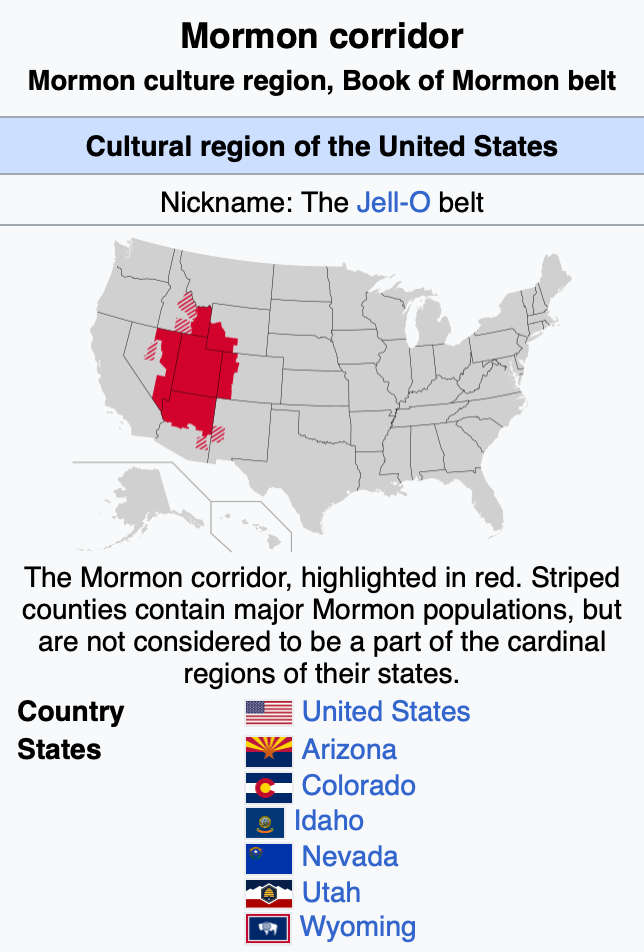
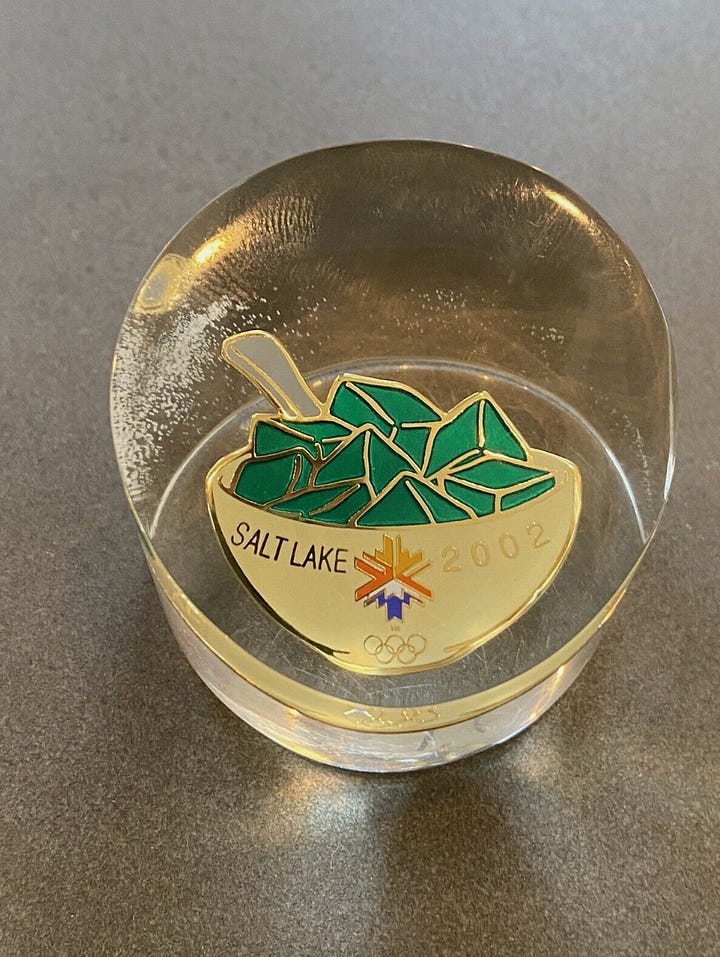
Low-brow fair:
When compared to with other communities in the U.S. known for their diverse culinary traditions, Utah looks just as bland as its food. Utah’s straightforward, home-style cuisine seems less refined than the rich culinary traditions as states like New York, California, Arizona, Louisiana, and many, many more. Let’s put it this way, no one comes to Utah for its food. On Sundays, most Mormon dinner tables feature a buffet of meat cooked in cream-of-something soup, served over a starch, with less emphasis on vegetables and other culinary techniques. The restaurant scene throughout the state is even less diverse with an abundance of chain restaurants and soda shops.
But what of it?
For the love of casseroles:
Funeral Potatoes
While interning at America’s Test Kitchen in Boston over 10 years ago, I was approached by a recipe developer and writer with a series of questions. “I heard you’re from Utah. Is that true?” I responded, “Yes.” “Are you Mormon?” “Yes.” “Do you know what funeral potatoes are?” I was very reluctant to identify with this type of cuisine that I had tried so hard to distance myself from (moving clear across the country, might I add). But I swallowed my pride and said, “Yes!” We then developed a recipe for funeral potatoes for an upcoming issue. I’ll be honest, I felt proud of my funeral potato background. The published recipe was a total success, but their description of the recipe cracks me up. “This gooey, cheesy casserole classic is usually made with convenience products. We wanted to keep the convenience but inject some ‘from scratch’ flavor.” It’s a soft implication Mormon food isn’t really ‘from scratch.’ They aren’t wrong though.
Chicken Divan
Growing up, other casseroles were a big part of my upbringing. Thank heavens my mom rarely, if ever, made a Jell-O casserole, but Chicken Divan was a regular dinner staple in our house. It’s a cream-of-chicken-based concoction with broccoli and cubed chicken under a bed of— you guessed it— starch, rice to be exact. I remember a plate of Chicken Divan being the most comforting dish after a long day of school, tennis, and cheerleading practice. My mom always had the ingredients in the freezer, and it fed our family so many evenings. I still love it.
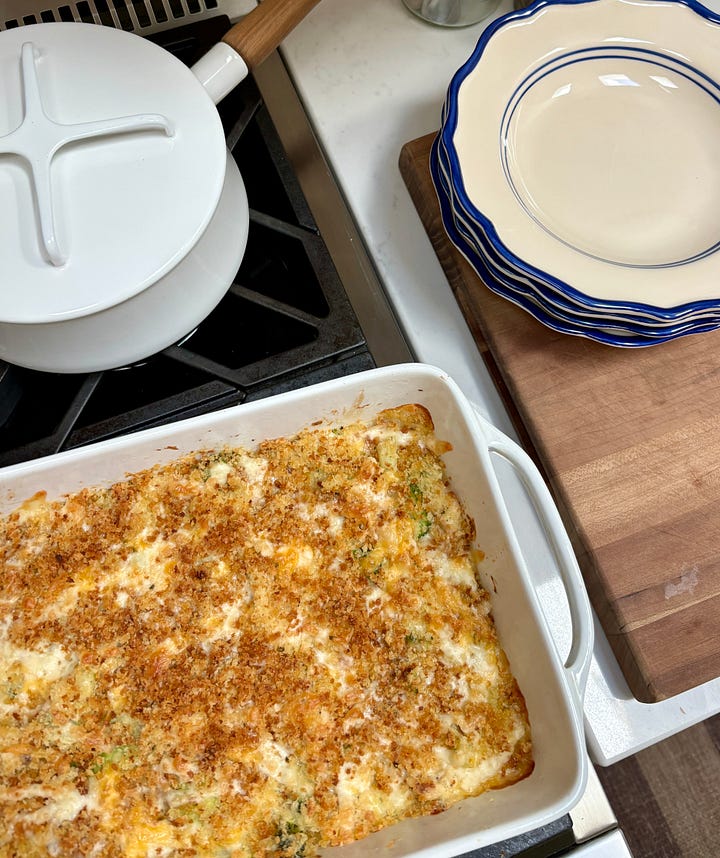

Like many family recipes, at some point, we started making chicken divan without a specific recipe. My mom dug up her chicken divan recipes, but neither of them represent how we actually make it. So, here is a recipe link to a more complete recipe.
Breakfast Casserole
Another Mormon fare my family ate a lot of and still makes today is breakfast casserole. There are many recipes for breakfast casseroles, some more "from scratch" than others. Ours is made special with store-bought seasoned croutons, cream of mushroom soup, Jimmy Dean sausage, and—surprise—more dairy. I often get asked for various recipes I make, but this one consistently tops the list. Whether that means I’m a terrible cook or simply that Mormon comfort food truly hits the mark, I’ll leave for you to decide.
Let me clear up my mom’s recipe notes:
1 teaspoon dry mustard
We use 2 cups of milk, plus 1/2 cup milk total.
The moral of this story is: who doesn’t love a casserole? While casseroles are not unique to Mormon cooking, they certainly are ubiquitous. But what would make a casserole more classy (if such a thing exists)? A classy casserole dish! Say that 5 times fast.
Dansk Kobenstyle Large Baker
Pretzel Jell-o Salad
Probably the weirdest thing my mom ever made (on rare occasions, emphasis on rare) is pretzel Jell-O salad. Yep. My memories of this salad aren't about eating it—I honestly don’t think any of us ever ate this twisted Jell-O delight—but rather about my mom’s love for it. You could sense the nostalgia in her voice every time she wanted to make it. If a Jell-O salad makes her think fondly of her childhood, then that’s okay with me. But I still won’t be eating it.
Should you want to indulge in this witchcraft, here is a recipe I found online brought to you by Mel’s Kitchen Cafe.
It is what it is:
Besides carbohydrates, one of the most common themes in Mormon food is the focus on family dinners and communal meals, which are often centered around filling comfort foods. For heck sakes, funeral potatoes got their name simply because they are most often served when the Mormon community comes together to provide a meal for those attending a funeral service.
While I might wish that my Mormon identity included more classic recipes and fewer from ward cookbooks, food, regardless of its flair, is deeply tied to cultural identity, nostalgia, and personal experiences. I’ve come to realize that while some might find certain aspects of Mormon or Utah food unusual and low caliber, others see them as an important part of their heritage and community traditions. After attending the funeral of a dear family friend earlier this year, a traditional Mormon buffet was served afterward. Despite its simplicity, the meal was truly comforting and satisfying. I believe it was nourishing for everyone in attendance, and it tasted even better knowing that those who prepared it came together in service for the grieving family.
Sometimes the familiarity of what you grew up with can be just as valuable as the novelty of other traditions. I’m choosing to find joy in the memories associated with Mormon food culture and make them part of my personal culinary journey.
However…
I wish Utahns would stop ordering steak well-done, get over their seafood-phobia, and, most importantly, acknowledge that Crumbl cookies are total sh*t. Okay, positivity starts now.
Let’s inject some ‘from scratch’ flavor:
First up, homemade Condensed Cream of Mushroom Soup. I’ve never done this, but I’ve always wanted to try it for our breakfast casserole.
Homemade Croutons. Always good.
Homemade Ranch Seasoning. I did this a couple years ago and it worked really well.
Herby Rhodes Rolls: If you’re going to use Rhodes Rolls, no judgment, seriously, jazz it up a bit with this awesome recipe from the Modern Proper. I’ve made this several times.
What is Mormon cooking without a Cafe Rio dupe? I know a lot of people love this recipe for Cafe Rio chicken. It’s delish. But, let’s make it a little less processed.
Use homemade ranch seasoning
Use Mary’s Organic Free-range Chicken
As always, there is so much more about this topic that I didn’t touch on in this brief post. For example, how food storage influences the way Mormons interact with and understand food, or the fact that tastes and habits are changing as younger generations grow older and gender roles evolve. I hope to elaborate on this topic in a more sophisticated way, but for now, feel free to share your own experiences growing up in the Jello-Belt or to post some of your favorite Mormon recipes from your childhood.
Love,
Kayla




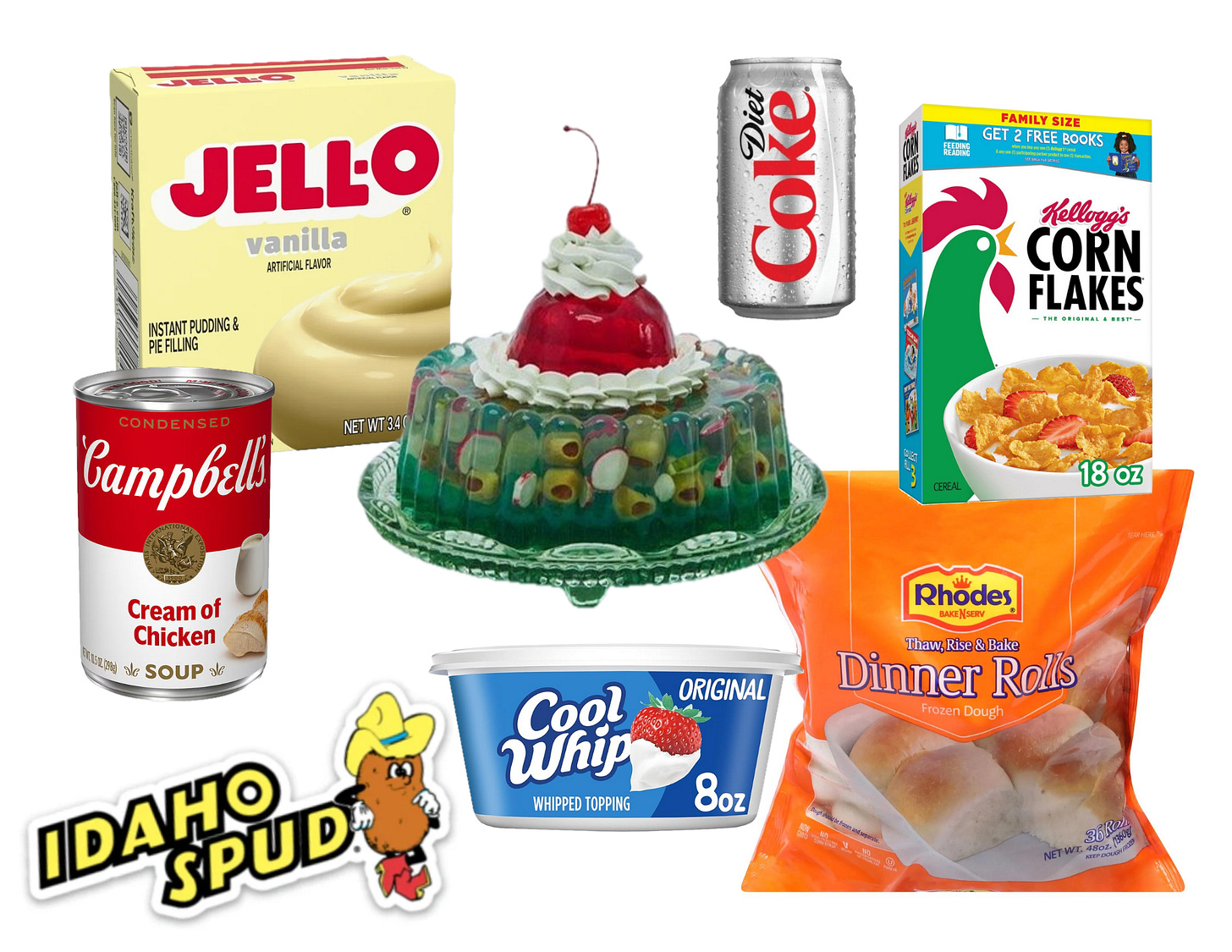

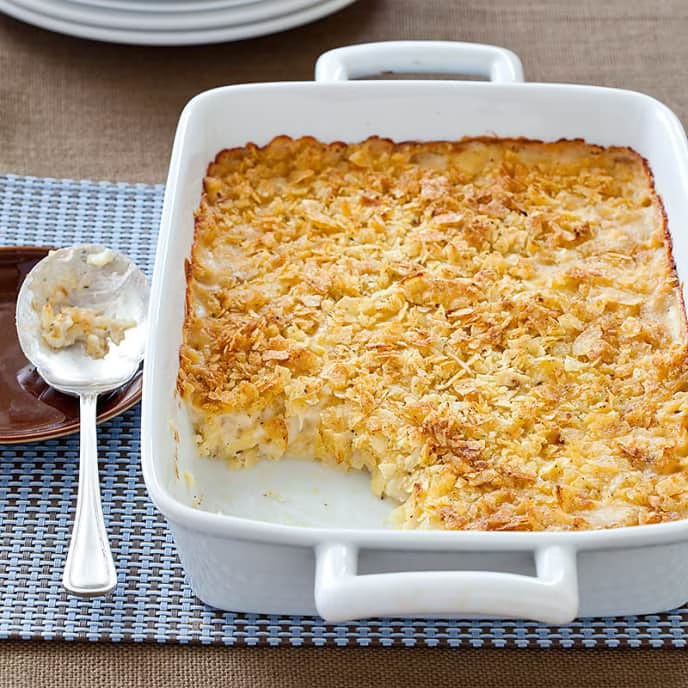
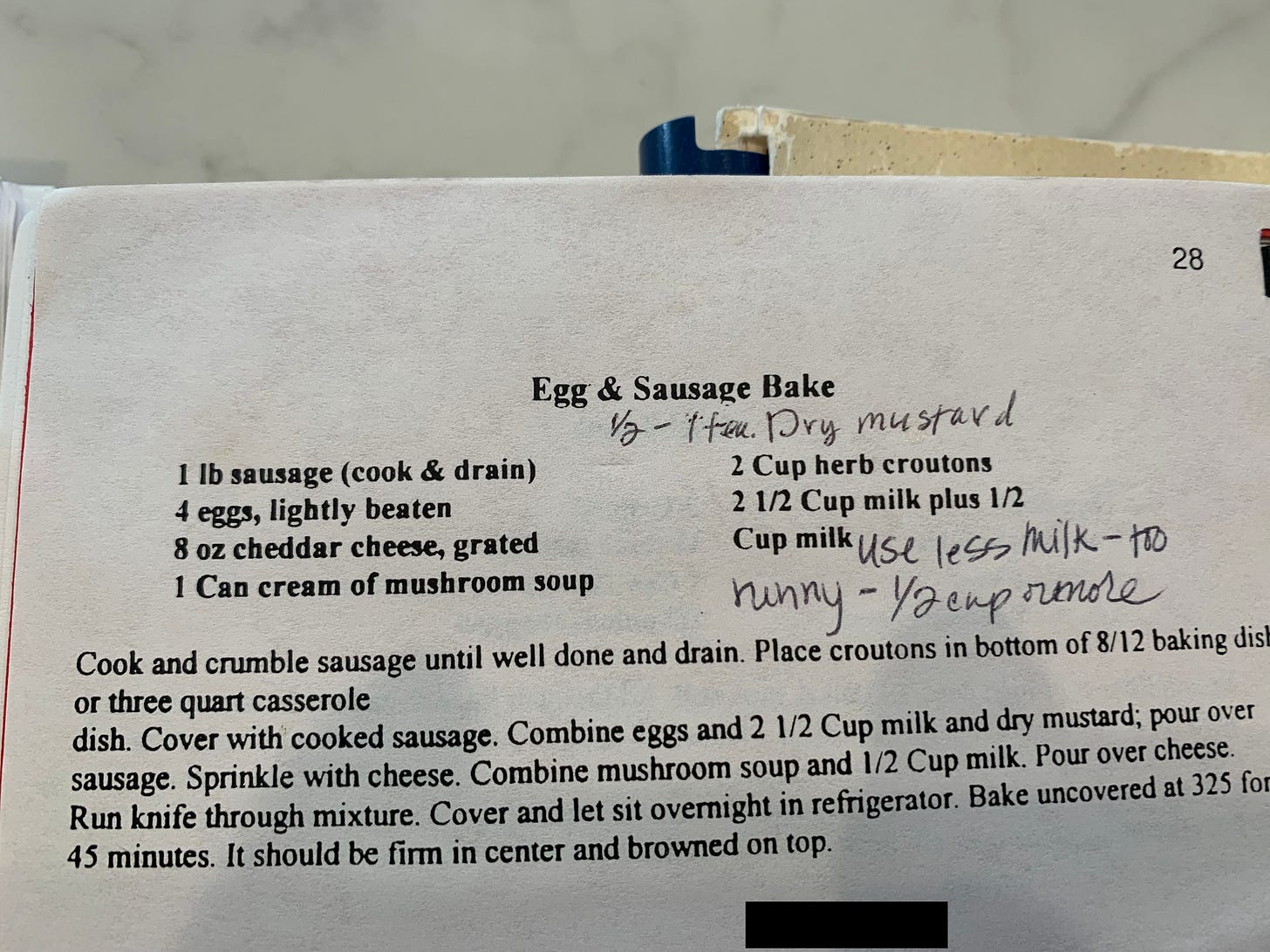



One of my favorites growing up was (and admittedly still is) a jello salad my family referred to as “Pink Salad” (there are prob other names for it). It seems in my mind that this was a standard “Mormon” staple at ward gatherings, funerals and family reunions. It’s a combination of strawberry or cherry jello (just the powder), mixed with cottage cheese, Cool Whip, a can of drained fruit cocktail, and sliced bananas — I like to add fresh strawberries and blueberries.
(Side note: I’ll take my steak medium-rare with a side of shrimp cocktail, but give me the funeral potatoes all day long 😜.)
Loved this 👏🏽👏🏽